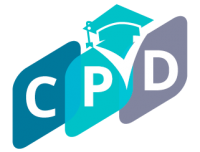Introduction:
In the dynamic landscape of education, the recognition that students learn in diverse ways has led to the evolution of differentiated instruction. This pedagogical approach tailors teaching methods to accommodate various learning styles, abilities, and interests within a single classroom. In this article, we will explore the significance of differentiated instruction in educational pedagogy and how it addresses the diverse learning needs of students.
1. **Understanding Differentiated Instruction: Tailoring Education to Individuals**
Differentiated instruction is an approach that acknowledges the unique characteristics of each learner and seeks to adapt teaching strategies accordingly. Rather than adopting a one-size-fits-all model, educators employing differentiated instruction recognize that students have varied learning preferences, readiness levels, and interests. This pedagogical philosophy aims to create an inclusive learning environment where all students can thrive.
2. **Varied Learning Profiles: Meeting Students Where They Are**
One of the core principles of differentiated instruction is recognizing and accommodating varied learning profiles. Students enter classrooms with different levels of prior knowledge, skills, and strengths. Through pre-assessment and ongoing formative assessment, educators can tailor instruction to meet students at their current level of understanding, providing appropriate challenges for each individual.
3. **Adapting Content, Process, and Product: The Three Tiers of Differentiation**
Differentiated instruction operates on three key tiers: content, process, and product. Content differentiation involves adjusting the material students are exposed to based on their readiness and interests. Process differentiation focuses on adapting the instructional methods to suit the preferred learning styles of individual students. Product differentiation allows students to showcase their understanding through varied assessments that align with their strengths and preferences.
4. **Flexible Grouping: Maximizing Collaborative Learning Opportunities**
In a differentiated classroom, flexible grouping becomes a powerful tool for meeting diverse learning needs. Educators can strategically group students based on their abilities or interests, allowing for targeted instruction. Small group activities, peer collaboration, and individualized projects provide opportunities for students to learn at their own pace and benefit from the expertise of their peers.
5. **Personalized Learning: Tailoring Education to Individual Goals**
Differentiated instruction promotes personalized learning plans that cater to individual student goals and aspirations. By incorporating student interests into lesson planning and allowing choice in assignments, educators can create a more engaging and relevant learning experience. This personalization fosters a sense of ownership and motivation in students, driving them to actively participate in their educational journey.
6. **Assessment for Learning: Guiding Instruction through Feedback**
In a differentiated classroom, assessment is not just a measure of learning; it also serves as a guide for further instruction. Formative assessment allows educators to continually monitor student progress and adjust their teaching strategies accordingly. By providing timely and specific feedback, educators can address misconceptions, reinforce understanding, and adapt their approach to better meet the needs of individual students.
7. **Inclusion and Equity: Creating an Inclusive Learning Environment**
Differentiated instruction plays a crucial role in fostering an inclusive and equitable learning environment. By recognizing and addressing diverse learning needs, educators contribute to the creation of classrooms where every student feels valued and supported. This approach helps bridge gaps in achievement and ensures that all students have the opportunity to succeed, regardless of their learning styles or abilities.
Conclusion:
Differentiated instruction stands as a beacon of inclusivity and responsiveness in educational pedagogy. By embracing the diversity of learners and tailoring instruction to meet individual needs, educators create classrooms that are dynamic, engaging, and supportive. As we navigate the complexities of modern education, differentiated instruction emerges as a powerful tool for addressing the unique learning profiles of students, promoting personalized learning, and fostering an inclusive educational experience. In recognizing and celebrating the diversity within our classrooms, we embark on a journey that not only enhances academic achievement but also prepares students to thrive in a world that values individuality and embraces the strengths of each learner.
